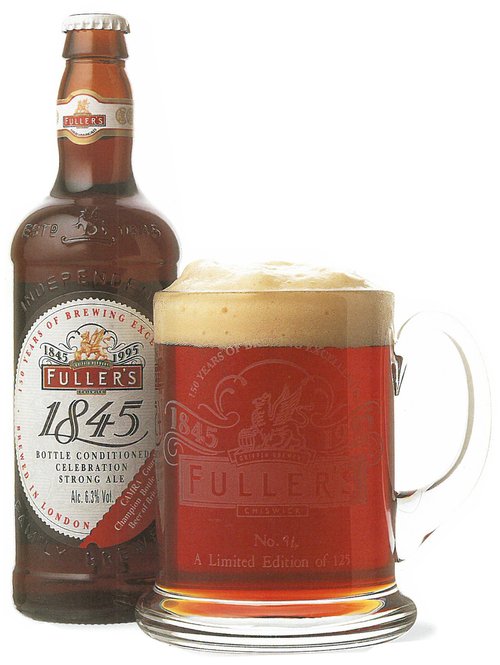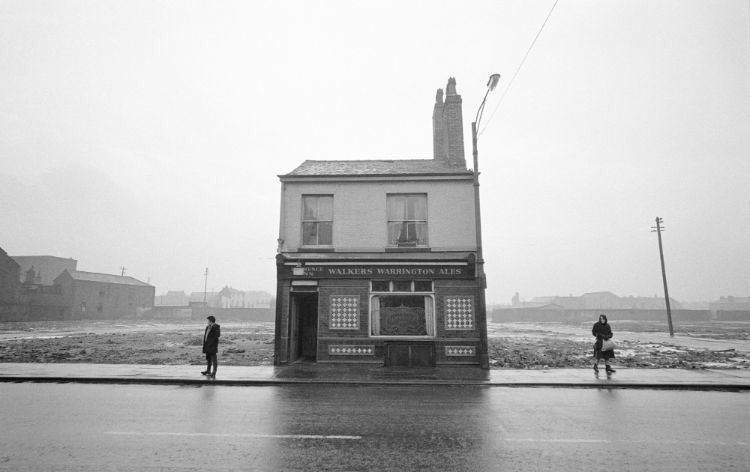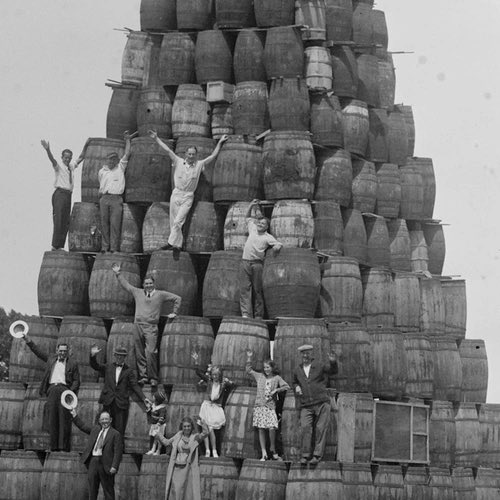 Ah summer. Well, that was fun! It didn’t snow once and I never had to scramble up after taking a spill on an icy sidewalk. But it is done. Calendar wise at least. Who knows how long until the first frost. Two years ago this week we came within half a degree. What a drag. Nothing near that on the two week outlook. I have about a hundred green tomatoes out there. What the hell would I do with them?
Ah summer. Well, that was fun! It didn’t snow once and I never had to scramble up after taking a spill on an icy sidewalk. But it is done. Calendar wise at least. Who knows how long until the first frost. Two years ago this week we came within half a degree. What a drag. Nothing near that on the two week outlook. I have about a hundred green tomatoes out there. What the hell would I do with them?
Speaking of what to do with where and when, Pellicle has an interesting article from Adam Wells this week on how cider does not benefit at home or in the pub from the plastic bag in a cardboard box treatment… which is odd as I just saw something on some social media app about how they work so well now for a better sort of wine – you can decide after you have a read:
It is still far too common for ciders and perries on sale in pubs and bars to be heavily affected by a serious liquid fault. I’m not talking about matters of preference here, or simply about something not quite being at its best; I’m talking about liquid that does serious, lingering reputational damage to the image of “real” cider in the mind of the consumer. I’m talking about vinegary acetic acid. I’m talking about the eggy, sewage-like fug of hydrogen sulphide. I’m talking about the gluey nail varnish remover of ethyl acetate, the cardboard of oxidation (no, that cider is not supposed to be mahogany and opaque), I’m talking about the appalling musty kickback of mouse—a horrendous off-flavour (also known as THP) that can be caused by certain types of wild yeast.

 Sounds all very much a fail. Oh, for the good old days. Remember way back when? Remember? Well, forget remembering as then is now! What? Well, in the now in the sense that these two images on TwitterX caught my eye and drew me back. The one is from the 1978 Postlip Beer Festival to the left and and the other to the right from the 1980 Greater Manchester Beeer Festival. Are it really “a cacophony of brown beer“? Was it really “a very different beer scene“? I dunno. If you time traveled back to 1978, you could certainly buy Suncrush Squash which I suppose you could pour into any of the ales if you really needed a modern day abombination. Somewhat related in that sense, Jessica Mason reports on a new angle on selling NA beer… or whatever it is:
Sounds all very much a fail. Oh, for the good old days. Remember way back when? Remember? Well, forget remembering as then is now! What? Well, in the now in the sense that these two images on TwitterX caught my eye and drew me back. The one is from the 1978 Postlip Beer Festival to the left and and the other to the right from the 1980 Greater Manchester Beeer Festival. Are it really “a cacophony of brown beer“? Was it really “a very different beer scene“? I dunno. If you time traveled back to 1978, you could certainly buy Suncrush Squash which I suppose you could pour into any of the ales if you really needed a modern day abombination. Somewhat related in that sense, Jessica Mason reports on a new angle on selling NA beer… or whatever it is:
Speaking to the drinks business, ON Beer founder Chris Kazakeos said: “ON Beer is a revolutionary, zero-alcohol beer crafted with a special blend of superpower plants, that uplift and elevate your feelings.” In querying what makes the beer different from other alcohol-free beers vailable, Kazakeos explained: “ON beer delivers a uniquely refreshing and full-bodied flavour. Infused with our ON X Blend of superpower plants, each sip carries subtle botanical undertones, seamlessly blended with the robust, richly malted flavour that beer lovers crave. The complex layers of taste unfold gradually, creating a balanced, deeply satisfying experience.”
Nice to see that the sucker juice movement has found new and fertile ground. Why do they still bother calling it “beer”? Speaking of movements, you know when folk call something “neo-prohibitionist” and it never makes any sense at all? Yes, me too. But in this case, there is no doubt a significant share of one Canadian community that actually qualifies:
After more than a century as one of the last dry towns in Alberta, Cardston’s 3,500 or so residents no longer have to leave to buy an alcoholic beverage. On Tuesday, Cardston town council voted 5-2 in favour of allowing sit-down restaurants and recreational facilities like the local golf course to apply for liquor licenses. A non-binding plebiscite in May set the stage for Tuesday’s decision. When asked if they would allow limited liquor sales in the town, the yes vote won in a narrow 494 – 431 victory.
Speaking of things being over, are big beer convention fest things so… umm… pre-pandemic? Courtney Iseman at Hugging the Bar might be suggesting so:
Earlier this year, I strongly considered finally attending my first GABF. But then this month ended up being the only time that made sense for me to get overseas to visit some friends, and I also came out of CBC thinking…one behemoth beer to-do per year is probably enough. After running into a few people doing this in Nashville around CBC, though, it did occur to me that maybe the least stressful, most fun approach to going to GABF is to not go to GABF—but instead just head to Denver the same week to take advantage of all the external events put on by individual breweries.
Jeff* contends to the contrary, stating that the GABF is relevant but perhaps just not really a true national event – and also concluding with this pro-fest argument:
I have been somewhat dismayed by how much beer chat has turned into industry and/or business chat. Discussions of the pleasurable turn quickly into the salable. The GABF is one antidote to that. People get together in a large hall to select the tastiest beers in the country, and later thousands more gather in an even larger hall to guzzle beer for the sheer pleasure of it. It’s a reminder that the root of our passion isn’t measured in dollars, but something only our tongues and noses can tell us.
I don’t disagree. Beer has sort of run its course or at least its present direction and too often in such a situation all that is left is the business related stuff. But… think about it… if it takes getting under one conventiton center roof or even one town where the convention is held to find a worthy discussion about beer… whether at the Jeff’s GABF or CBC… doens’t that sort of mean that the discussion of beer is limited to (i) the amount of people who can fit in those spaces and (ii) to those people who can afford the cash and time to get to those places? Are these things also perhaps as isolated fom the average beer consumer as that business side chit chat is? Time for something new in beer, folks… but what? Cacophonic brown beer!!
Somewhat illistrative of the boring stiff, did the Washington Post misplace a word or two in this headling this week: “Explore the evolution of beer, from Stone Age sludge to craft brews“? Those words sit above an odd piece of publishing, a sort of participatory quiz about an extremely summary level of brewing in human history, some of which might actually be nearly true, all with heavy input from the graphics department. The goal is apparently find you your dream beer match, sorta like that quiz in the May 1978 issue of Teen Beat to see if you would be a good match for a dream date with Andy Gibb.
Far more reality based was “Double double. toil and trouble” this week. Jeff uses the phrase as a title to his post about an interesting hopping experiment (perhaps not remembering it is in fact a reference to beer):
A decade ago, then-small Breakside Brewery made a fresh-hop beer using an outlandish process. They froze the hops, still fresh and 80% water, with liquid nitrogen. This turned them into vitreous emeralds, brittle and ready for smashing under what brewer Ben Edmunds likened to a potato masher. Once broken into shards, the lupulin glands were exposed for easy access to the beer they would soon enter. They’ve continued that process ever since, but until this morning, I’d never actually seen it for myself.
There was a bit of a kerfuffle in France where the Rugby World Cup is being played. Apparently the beer service was not up to expectations and the government is rolling up its sleeves:
France’s sports minister is so eager to “reconcile” with England fans irritated by poor organisation at Rugby World Cup games that she will attend their next match on Sunday to monitor security, transport and even the beer supply. Amélie Oudéa-Castéra told the Financial Times she would “personally monitor every detail” at the match in Nice to ensure that fans unhappy about overcrowding, beer running short, and other problems at previous games would be well served this time. “Their experience at the match against Japan must be impeccable from start to finish,” she said… “The English are still mad at us,” Oudéa-Castéra said ruefully.
“Ruefully”?!?!? Seriously? The world is on fire, World War III is simmering just on the edge of the timeline and yet here is a member of a nuclear power’s cabinet is worry about whether the English get enough to drink? Someone needs some sober self-reflection. Just like Martin did when he had a moment this week that led to reflection about being a pub photography weirdo that in turn led to an invention waiting to be invented:
I don’t know why I didn’t just own up to photographing pump clips, loads of weirdos do it, but instead I said I was sureptitiously Shazamming the track playing at that moment. Shazam was on strike, so the nice lady hunted down the playlist for me, and I dutifully wrote the details in my notes. Anyway, my cover story worked, though when a few minutes later I heard another post-millennial banger I didn’t recognise I was too embarrassed to ask. Pubs should replace those electronic display boards with beer details with ones showing music playlists and county cricket scores.
And Ron finally took Delores on one of his trips. I am not saying he shouldn’t get out once in a while by himself but Delores is my favourite character in Ron’s writings so a trip to the former Yugoslavia is bound to be just the thing:
“This will be my second new country this year.”
“Good for you, Ronald.” Dolores says unenthusiastically
“You don’t sound very enthusiastic.”
“Don’t make such a big thing out of everything.” That’s me telt.
He does make a big thing out of everything Delores, doesn’t he. You nailed it. And how will Ron treat himself to the clinkies and drinkies at the airport this time?
No duty free for me today. “You can buy something in Belgrade. It’ll be a lot cheaper there.” Dolores suggests. And I’m not going to argue with her. I know where that will get me. To not a good place.
Magic! Love it!! Entirely conversely, this has got to be the  dumbest logo ever. It’s slightly nausiating even. Are you supposed to drink from your thumb now? Does your thumb allow you to grab a glass of another brewery’s beer? I’m sure I am thinking to much about it. In that respect, I believe I am in a similar situation to that of the logo designer.
dumbest logo ever. It’s slightly nausiating even. Are you supposed to drink from your thumb now? Does your thumb allow you to grab a glass of another brewery’s beer? I’m sure I am thinking to much about it. In that respect, I believe I am in a similar situation to that of the logo designer.
Finally, Stan’s latest edition of Hop Queries came out last Friday and he is running a contest:
The rules are pretty simple. The winning prediction will be the one that comes closest to total hop production in Idaho, Oregon and Washington. Over or under does not matter; just the closest. Please include eight or nine digits (for example, 99,999,999 or 100,000,000). The USDA will report harvest results in December. The deadline to enter is Sept. 25. You may enter by hitting reply, but I prefer you email your prediction to hopqueries@gmail.com.
How jolly. And way more fact based than that thing in the Washington Post up there. And… that is that. Finito. Unbelievably, still no drunk elephant stories this week. I looked, I tried Stan. Still, as per always and forever, you can check out the many ways to find good reading about beer and similar stuff via social media and other forms of comms to connect – even including at my somewhat quieter than expected Threads presence @agoodbeerblog. Got on BlueSky this week and added it to my IG, FB, X, Mastodon, Threads, Substack Notes and a deservedly dormant Patreaon presence. I am multi! I am legion!! Yet totally sub. All in all, I still am preferring the voices on Mastodon, like these ones discussing beer:
Alan McLeod | A Good Beer Blog (… me…)
Stan Hieronymus | The Man!
Boak & Bailey | The B² experience
Curmudgeon Ale Works | Jonathon is Brewing
Katie Mather | Shiny Biscuit and Corto
David Jesudason | “Desi Pubs” (2023) author
BeoirFest | They say “Let’s Talk Beer”
Ron Pattinson | The RonAlongAThon Himself
Al Reece AKA Velky Al | Fuggled
Jennifer Jordan | US hops historian
Andreas Krennmair | Vienna beer and lager historian
Beer Ladies Podcast | Lisa Grimm and colleagues
The Bar Towel | Toronto’s chat zone for beer lovers
Chicago Beer Society | Folk in Chicago getting social over beer
Jay Brooks | Brookston Beer Bulletin
Joe Stange | Belgian beer expert, beer magazine editor
Cider Bar | Barry makes Kertelreiter cider
Laura Hadland | CAMRA historian and beer writer
Brian Alberts | US beer historian
Jon Abernathy | The Beer Site
Maureen Ogle | US Beer Historian
Lars Garshol | Norwegian Beer Historian and Kveik Hunter
James Beeson | Beeson on Beer
Carla Jean | MAINER!!!
Thandi Guilherme | Beer Ladies Podcast Co-host
Lisa Grimm | Beer Ladies Podcast Co-host
Roy of Quare Swally | Beery ramblings from Northern Ireland
Rob Talksbeer | Podcaster and Youtuber
Anthony Gladman | UK Drinks Writer
Jeff Alworth | Manna Of Beervana
Northwest Beer Guide | Fairly self explanatory… but not NW Latvia…
Evan Rail | Prague based GBH editor, freelance writer, NYT etc.
Todd Alström | 50% of the Alströms
Jacob Berg | Beer talking librarian
Anyone else? And, yes, we also check the blogs, podcasts and newsletters to stay on top of things (though those things called “newsletters” where 1995 email lists meet the blogs of 2005 may be coming to an end of value if the trend with so many towards the dull dull dull means anything) including more weekly recommendations from Boak and Bailey every Saturday and Stan at his spot on those Mondays! Get your emailed issue of Episodes of my Pub Life by David Jesudason on many Fridays. And Phil Mellows is at the BritishBeerBreaks. Once a month, Will Hawkes issues his London Beer City newsletter and do sign up for Katie’s now much more occassional but always wonderful newsletter, The Gulp, too. Ben’s Beer and Badword is back! And check out the Atlantic Canada Beer Blog‘s weekly roundup. There is new reading at The Glass. Any more? Yes! Check to see the highly recommended Beer Ladies Podcast. And the long standing Beervana podcast . There is the Boys Are From Märzen podcast too and check out the travel vids at Ontario’s own A Quick Beer. There is more from DaftAboutCraft‘s podcast, too. All About Beer has introduced a podcast. There’s also The Perfect Pour. Plus follow the venerable Full Pint podcast. And the Craft Beer Channel on Youtube soon celebrating a decade of vids. And remember BeerEdge, too, and The Moon Under Water… if you have $10 a month for this sort of thing… I don’t. Pete Brown’s costs a fifth of that. There was also the Beer O’clock Show but that was gone after a ten year run but returned renewed and here is the link!
*For the double!
























